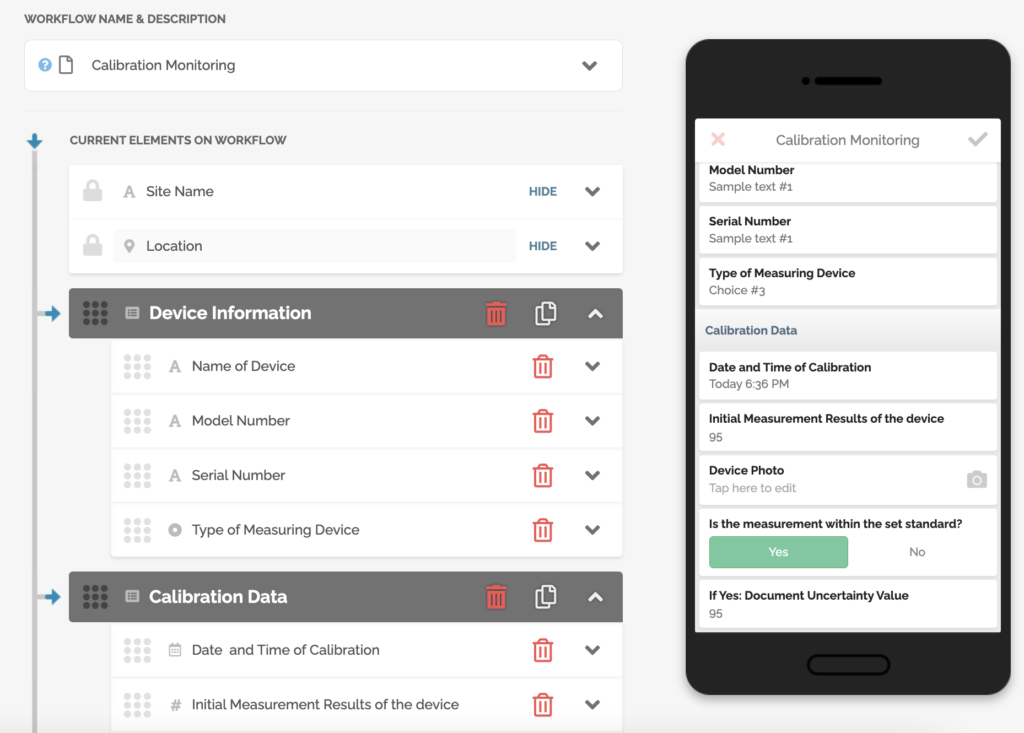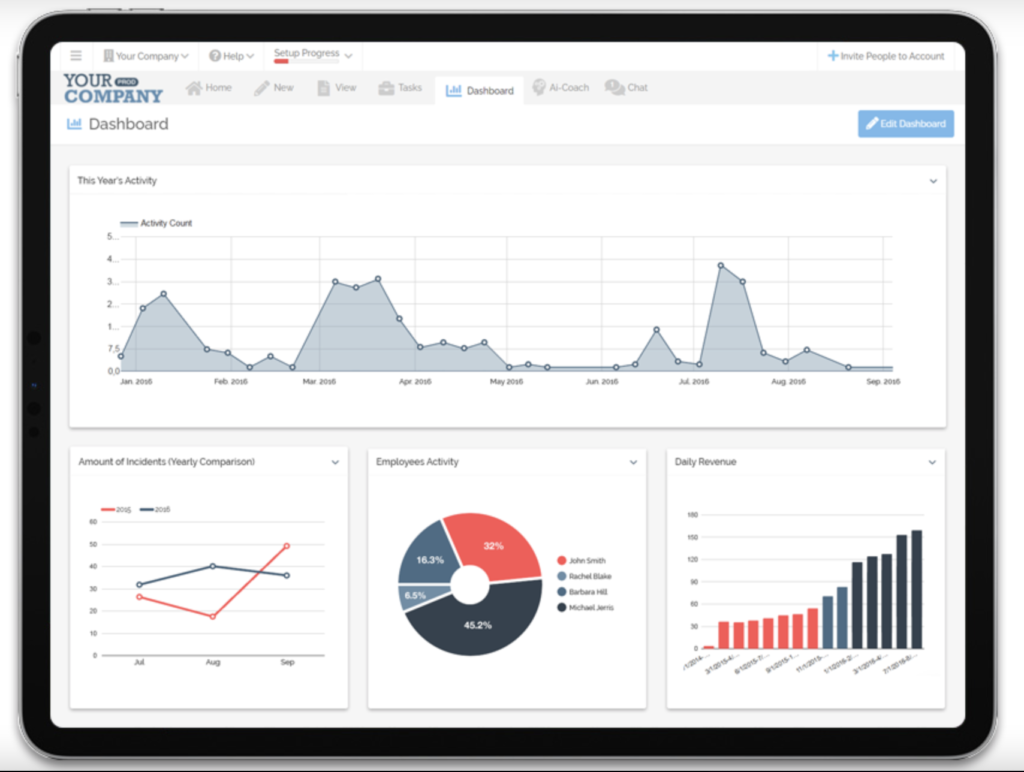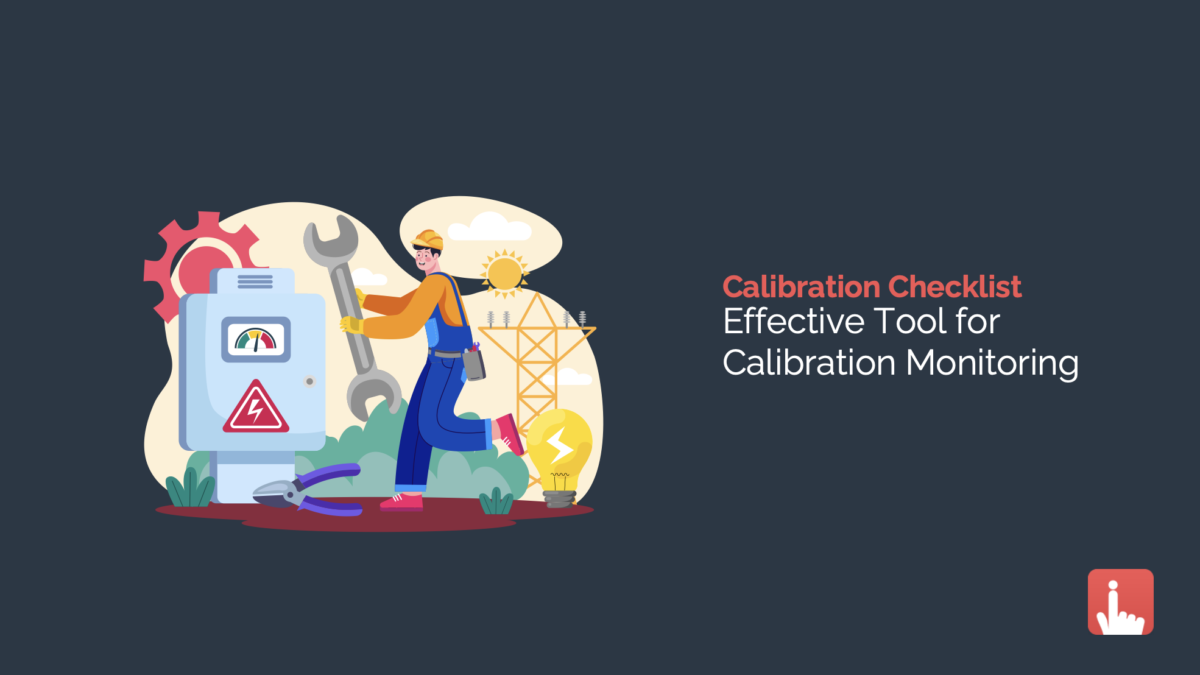A calibration management system is essential to ensure that calibrations meet requirements for accuracy, precision, and linearity.
An effective calibration checklist outlines the key requirements for proper calibration monitoring in production systems.
Table of Contents:
1. What is Calibration and Its Importance
2. 5 Types Of Calibration and Its Method
3. Engineering Tolerances: Accuracy, Precision, and Uncertainty
4. Advantages of Using Digital Calibration Monitoring Checklist
What is Calibration and Its Importance
Calibration is the process of adjusting a measuring instrument so that its indications conform to a standard reference value. Calibration aims to ensure that measurements made with a particular instrument are accurate and precise.

Calibration is essential for many types of measurements, especially in the fields of science and engineering. This includes:
1. Calibration ensures that measurements made with an instrument are traceable to international or national standards. This traceability helps ensure the quality of products and services and provides a basis for comparing measurements made by different devices.
2. Calibration also plays an essential role in monitoring and control systems, which ensure that process variables are within specified limits.
3. Calibration is an important part of quality control in many industries, especially in the semiconductor and pharmaceutical industries, where minor variations in product specifications can significantly impact.
4.Calibration is also essential in production engineering, which ensures that manufactured products meet specifications.
In general, calibration is essential whenever accurate measurements are required. By regularly calibrating devices, businesses can ensure that their production process runs smoothly and efficiently.
5 Types of Calibration and Its Method
Calibration is the comparison of a measuring instrument or secondary standard with a calibration standard of known accuracy.
ISO 17025 is the international standard that specifies the requirements for the calibration of measuring instruments. It covers all measuring instruments, including pressure gauges, temperature probes, flowmeters, and multimeters.
The standard requires that calibrations be performed using traceable reference standards and that the accuracy and precision of measurements be documented. Calibrations must also be repeated on a regular basis to ensure that they remain accurate.
The calibration process may be performed manually or electronically. Various types of calibration methods exist:
– Pressure calibration: Gauge calibration, adjust pressure transducers, calibrate manometers/deadweight testers, etc.
– Temperature calibration: Black Body emitters, Infrared calibration sources, GRITS calibration systems (Gas Recipe Infrared Thermal Sources), etc.
– Flow calibration: Liquid & gas flowmeters (Coriolis, oval gear, turbine, positive displacement), mass flow controllers (MFCs), etc.
– Mechanical calibration: Measure length & distance (tape measures, micrometers, digital calipers), check thread & plug gauges, calibrate torque wrenches, etc.

– Electrical calibration: Multimeters, impedance meters, function generators, electronic loads, power supplies & analyse battery chargers, etc.
In order for measurements to be reliable and accurate, it is essential that regular calibration checks are carried out on all equipment. This will ensure that any drift from the original reading is corrected and that the equipment reads correctly within the specified tolerances.
NOTE: Even the best quality equipment will slowly drift out of calibration over time, so it is essential to have a robust calibration schedule to minimize the impact on measurement accuracy.
Engineering Tolerances: Accuracy, Precision, and Uncertainty

Engineering tolerances are the amounts by which variables such as dimensions, weights, and angles can deviate from their nominal values. The nominal value is the outstanding value of a quantity, while the actual value may differ due to manufacturing inconsistencies or other errors. Tolerances are necessary to ensure that engineering components fit together and function properly. The three main types of tolerances are accuracy, precision, and uncertainty.
-Accuracy is how close a measurement is to its true value.
-Precision is how repeatable the measurement is- in other words, how close together multiple measurements of the same quantity will be.
-Uncertainty is a measure of how much error there is in a measurement. It considers both accuracy and precision, as well as any other factors that may affect the reliability of the measurement.
There are many ways to achieve high levels of accuracy and precision and low levels of uncertainty in engineering measurements. Calibration is one method that can be used to adjust for errors in a measuring device. Another method is to take multiple measurements and average them together. This can help to cancel out any systematic errors. Calibration monitoring helps to provide historical calibration data points to help assess the stability of given measurements.
Advantages of Using Digital Calibration Monitoring Checklist
A calibration checklist determines if a measuring instrument meets calibration standards. The calibration process generally includes a comparison of the readings of the subject device to those of a standard with known accuracy. Checklists are part of the calibration process to identify the measuring device and ensure all measurements are taken and recorded accurately.
It’s hard to know if your measuring instruments are accurate and even harder to keep track of all the different calibrations you need to do.
Without a calibration checklist, it can be hard to know for sure if your instrument is meeting calibration standards. This means you could be making decisions based on inaccurate data, which could lead to faulty conclusions and costly business decisions.

FAT FINGER is here to help. This digital calibration checklist makes it easy for you to evaluate measuring equipment if it complies with calibration standards. FAT FINGER‘s scheduling and assignment function allows you to effortlessly assign immediate rectification of uncalibrated equipment without missing a scheduled instrument calibration.

FAT FINGER digital calibration checklists have many advantages.
-Easier to update and maintain
-Can be accessed from anywhere
-Can be customized for each individual measuring device
-Take a photo of calibration results
-Store calibration data and generate dashboard results
From speed and efficiency to security and accuracy, there are many reasons to make the switch to FAT FINGER. So what are you waiting for? Go ahead and try FAT FINGER today!

About FAT FINGER:
Ensure front-line teams do their work correctly every time. Drag & drop digital procedures that unlock operational excellence.
In seconds anyone can build and deploy enterprise-grade mobile applications using an easy drag-and-drop no-code builder.
FAT FINGER uses machine learning to coach app users in real-time to make safer and improved decisions.
Try building your digital procedure on FAT FINGER for free @www.fatfinger.io


